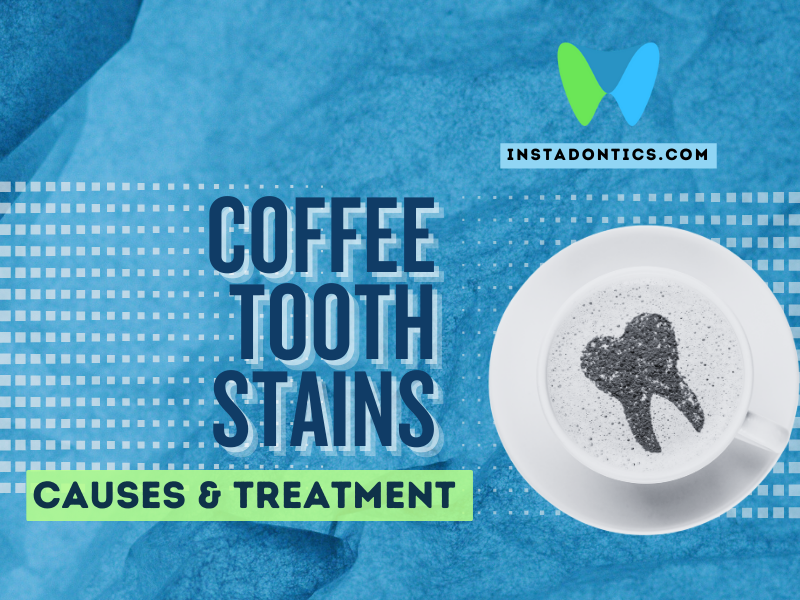Why Are My Teeth See-Through? Experiencing translucent teeth can be concerning, as it may indicate underlying dental issues. Many people notice that their teeth appear more transparent at the edges, which can lead to questions about the health of their teeth and what steps they should take. In this in-depth blog, we will explore the causes of translucent teeth, the implications for oral health, and the treatment options available to restore the natural appearance of your smile.
What Are Translucent Teeth?
Translucent teeth refer to a condition where the edges of the teeth, particularly the front teeth, appear clear or see-through. This translucency can be a sign of enamel erosion or thinning, which can occur due to various factors. The enamel is the outermost layer of the tooth and is responsible for protecting the underlying dentin and pulp. When the enamel becomes compromised, it can lead to aesthetic concerns and increase the risk of dental problems.
The Structure of Teeth
To understand why teeth can become translucent, it’s essential to grasp the basic structure of teeth:
- Enamel: The hard, outer layer that protects the tooth from decay and damage. Enamel is composed primarily of minerals, primarily hydroxyapatite, and is the hardest substance in the human body.
- Dentin: The layer beneath the enamel, which is softer and less mineralized. Dentin contains microscopic tubules that can transmit sensations, such as temperature and pressure, to the nerve inside the tooth.
- Pulp: The innermost part of the tooth, containing nerves and blood vessels. The pulp is responsible for the tooth’s vitality and sensation.
When enamel wears down or becomes damaged, the underlying dentin can become more visible, leading to a translucent appearance.
Causes of Translucent Teeth
Several factors can contribute to the development of translucent teeth. Understanding these causes can help you identify potential issues and take appropriate action.
1. Enamel Erosion
Enamel erosion is one of the primary causes of translucent teeth. This process occurs when the enamel is worn away due to various factors:
- Acidic Foods and Beverages: Consuming highly acidic foods and drinks, such as citrus fruits, soda, and vinegar, can erode enamel over time. The acids in these substances can weaken the enamel, making it more susceptible to wear.
- Acid Reflux: Gastroesophageal reflux disease (GERD) can cause stomach acid to flow back into the mouth, leading to enamel erosion. This condition can significantly impact the health and appearance of teeth.
- Poor Oral Hygiene: Inadequate brushing and flossing can lead to plaque buildup, which can produce acids that erode enamel. Over time, this can result in thinning enamel and increased translucency.
2. Genetics
Genetics can play a significant role in the strength and thickness of enamel. Some individuals may naturally have thinner enamel due to hereditary factors, making their teeth more prone to translucency. If you have a family history of dental issues, it’s essential to be proactive about your oral health.
3. Aging
As we age, our enamel naturally wears down due to years of chewing, biting, and exposure to various substances. This wear can lead to increased translucency, especially at the edges of the teeth. Additionally, the dentin may darken with age, further accentuating the appearance of translucent teeth.
4. Teeth Grinding (Bruxism)
Bruxism, or teeth grinding, can contribute to enamel wear and translucency. Individuals who grind their teeth, whether during the day or at night, can cause significant damage to the enamel over time. This habit can lead to both aesthetic and functional issues, including increased sensitivity and tooth fractures.
5. Dietary Habits
Certain dietary habits can contribute to enamel erosion and translucency. For example:
- High Sugar Intake: A diet high in sugar can lead to tooth decay and enamel erosion, especially if oral hygiene practices are lacking.
- Frequent Snacking: Constantly snacking on sugary or acidic foods can increase the risk of enamel wear, as the teeth are exposed to harmful substances more frequently.
6. Environmental Factors
Exposure to certain environmental factors can also affect enamel health:
- Fluorosis: Excessive fluoride exposure during childhood can lead to dental fluorosis, which may cause discoloration and translucency in teeth.
- Medications: Some medications, particularly those that cause dry mouth or alter the oral environment, can contribute to enamel erosion and translucency.
7. Dental Conditions
Certain dental conditions can also lead to translucent teeth:
- Celiac Disease: This autoimmune disorder can affect the health of teeth and lead to enamel defects, resulting in translucency.
- Eating Disorders: Conditions such as bulimia can cause significant enamel erosion due to frequent vomiting, which exposes teeth to stomach acid.
Implications of Translucent Teeth
Translucent teeth can have several implications for oral health:
1. Increased Sensitivity
As enamel wears away, the underlying dentin becomes more exposed, leading to increased tooth sensitivity. Individuals with translucent teeth may experience discomfort when consuming hot, cold, or sweet foods and beverages.
lEffective Remedies for Managing Tooth Sensitivity at Home
2. Higher Risk of Cavities
Thinning enamel can make teeth more susceptible to cavities and decay. Without adequate protection from enamel, harmful bacteria can penetrate the tooth structure more easily, leading to dental issues.
3. Aesthetic Concerns
Translucent teeth can affect the overall appearance of your smile. Many individuals seek cosmetic solutions to restore the natural color and appearance of their teeth, which may involve dental treatments.
4. Potential for Tooth Damage
Weakened enamel can increase the risk of tooth fractures and chips. This can lead to more extensive dental work, including fillings, crowns, or even tooth extraction in severe cases.
Treatment Options for Translucent Teeth
If you are concerned about translucent teeth, there are several treatment options available to address the issue and restore your smile:
1. Dental Consultations
The first step in addressing translucent teeth is to consult with a dentist. They can evaluate your oral health, identify the underlying causes of translucency, and recommend appropriate treatments.
2. Fluoride Treatments
Professional fluoride treatments can help strengthen enamel and protect against further erosion. Your dentist may recommend in-office treatments or prescribe fluoride toothpaste for at-home use.
3. Dental Bonding
Dental bonding involves applying a tooth-colored resin to the affected areas of the teeth to improve their appearance. This procedure can help mask translucency and restore a more natural look.
4. Veneers
Porcelain veneers are thin shells that are custom-made to cover the front surface of teeth. They can effectively conceal translucency and provide a more uniform appearance. Veneers are a popular cosmetic solution for individuals seeking to enhance their smiles.
5. Crowns
In cases where enamel erosion is severe, dental crowns may be necessary to protect the tooth and restore its shape and function. Crowns encase the entire tooth, providing strength and preventing further damage.
6. Orthodontic Treatment
If misalignment is contributing to enamel wear and translucency, orthodontic treatment may be recommended. Braces or clear aligners can help correct bite issues and misalignment, which may alleviate some of the pressure on the teeth and reduce grinding.
7. Lifestyle Modifications
Making changes to your lifestyle can also help prevent further enamel erosion and manage translucency:
- Dietary Changes: Reduce the intake of acidic and sugary foods and beverages. Incorporate more alkaline foods, such as vegetables and dairy, which can help neutralize acids in the mouth.
- Hydration: Drink plenty of water throughout the day to help wash away acids and promote saliva production, which is essential for remineralizing enamel.
- Oral Hygiene: Maintain a robust oral hygiene routine, including brushing twice a day with fluoride toothpaste and flossing daily. Regular dental check-ups are also crucial for monitoring enamel health.
8. Mouthguards for Bruxism
If teeth grinding is contributing to your translucent teeth, your dentist may recommend a custom mouthguard. This appliance can protect your teeth from the effects of grinding, reducing wear on the enamel.
9. Addressing Underlying Health Issues
If your translucent teeth are linked to a medical condition, such as celiac disease or an eating disorder, it’s essential to address the underlying issue. Working with healthcare professionals can help manage these conditions and improve your overall oral health.
Prevention of Translucent Teeth
Preventing translucent teeth involves a combination of good oral hygiene, dietary choices, and regular dental care. Here are some tips to help you maintain healthy enamel and prevent translucency:
1. Practice Good Oral Hygiene
- Brush and Floss: Brush your teeth at least twice a day and floss daily to remove plaque and food particles. Consider using a soft-bristled toothbrush to minimize wear on the enamel.
- Use Fluoride Toothpaste: Choose a toothpaste that contains fluoride, which can help strengthen enamel and protect against decay.
2. Limit Acidic Foods and Drinks
- Moderation is Key: While it’s not necessary to eliminate acidic foods entirely, try to consume them in moderation. Rinse your mouth with water after consuming acidic foods or drinks to neutralize the acids.
- Use a Straw: When drinking acidic beverages, use a straw to minimize contact with your teeth.
3. Stay Hydrated
- Drink Water: Drinking water throughout the day helps wash away food particles and acids, promoting a healthier oral environment.
4. Avoid Grinding Your Teeth
- Manage Stress: Practice stress-reduction techniques such as meditation, yoga, or deep breathing exercises to help prevent teeth grinding.
- Seek Professional Help: If you suspect you have bruxism, consult with your dentist for a proper diagnosis and treatment options.
5. Regular Dental Visits
- Check-Ups: Schedule regular dental check-ups and cleanings to monitor your oral health. Your dentist can identify early signs of enamel erosion and recommend preventive measures.
- Professional Cleanings: Professional cleanings help remove plaque and tartar buildup, reducing the risk of enamel erosion and decay.
Translucent teeth can be a sign of underlying dental issues, particularly enamel erosion. Understanding the causes of translucency, such as dietary habits, genetics, aging, and bruxism, is essential for addressing the problem effectively. By consulting with a dentist and exploring treatment options, you can restore the appearance of your teeth and protect your oral health.
Preventing translucent teeth involves maintaining good oral hygiene, making dietary adjustments, and managing stress. Regular dental visits are crucial for monitoring your enamel health and addressing any concerns early on. If you notice changes in the appearance of your teeth, don’t hesitate to seek professional advice. Your smile is an essential part of your overall well-being, and taking proactive steps can help you maintain a healthy, beautiful smile for years to come.



